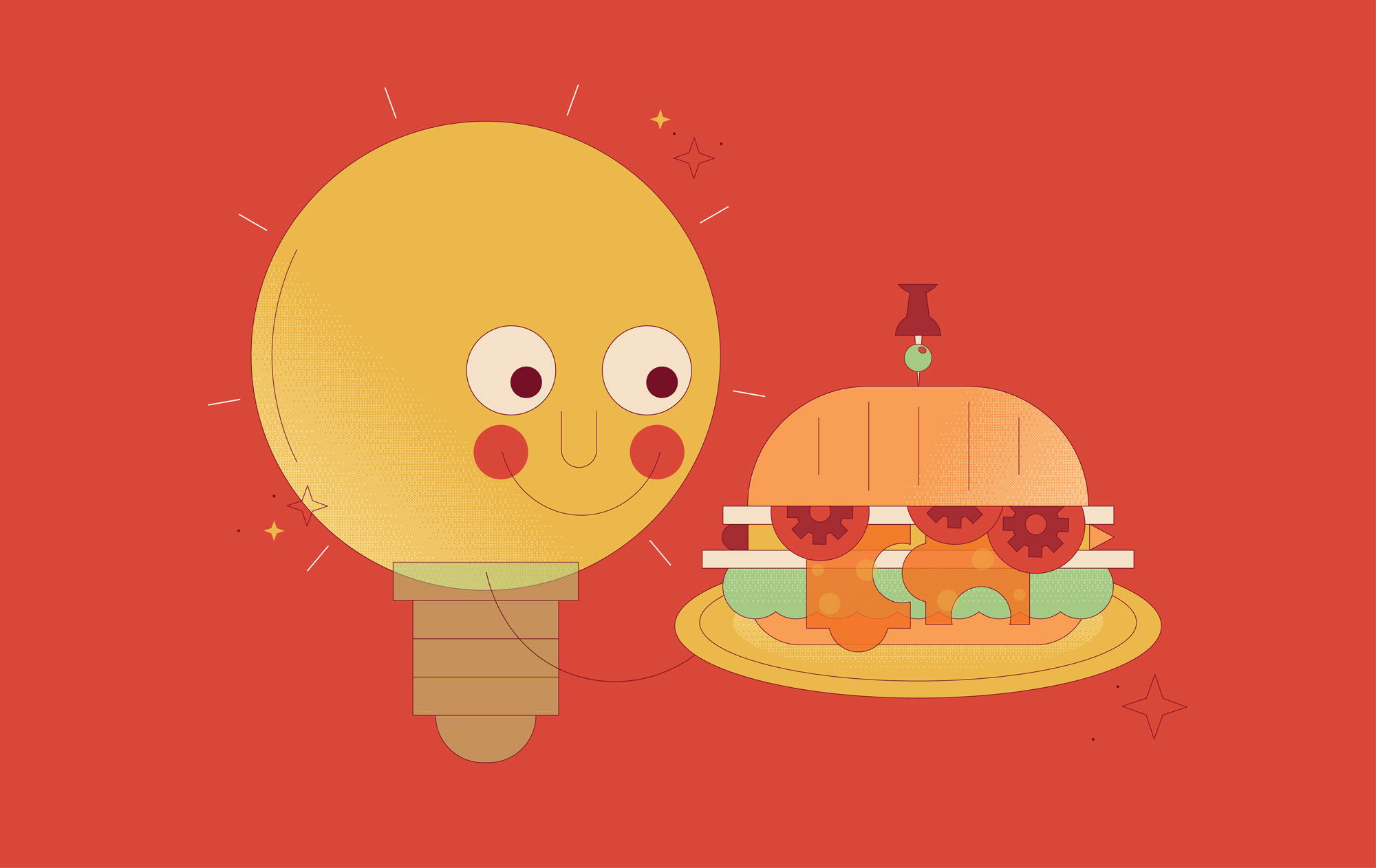David Kelley, MS ’78, appreciates the little things in life. “If you can get into the mode of enjoying the simple things,” he says, “then you’re going to have a lot of enjoyment in your life.” It’s the basis of one of his Creative Essentials—a working advice list the professor of mechanical engineering and co-founder of the 20-year-old Hasso Plattner Institute of Design, or d.school, has assembled the decades.
But if you’re not a painter or a poet, perhaps you’re wondering: Why should I want to be creative?
“You have more options,” Kelley says. If your thinking is free to fly in a thousand directions while problem-solving, you’ll generate more choices and select better ones. So whether you’re loading a dishwasher or launching a rocket, here are a few of Kelley’s tips for creativity—starting, obviously, with the hoagie. (Extra relish, please.)
 Kelley (Photo: Nico Zurcher)
Kelley (Photo: Nico Zurcher)
Enjoy every sandwich
“Creativity is a state of mind,” says Kelley, who celebrates 50 years on the Farm this fall. “When you’re stressed or when you’re fearful, you’re limited.” Earthshaking innovation requires relaxed attention—a state in which you’re alert enough to create, yet peaceful enough for ideas to flow effortlessly.
To achieve that serenity, Kelley suggests savoring the simple things. “The idea is a sandwich happens a lot.” Ultimately, it’s not about the PB&J or Reuben. It’s about extracting satisfaction from mundanity. The more proverbial sandwiches you delight in, the more tranquil life will feel and the better equipped you’ll be for creation.
Double deliver
Saddled with a task that feels dull or paint-by-numbers? Don’t close the door on creativity. Do what you’re told, Kelley says, and then reapproach the problem using your unique methodology.
Maybe you’re charged with designing a marketing campaign. Once you’ve devised a solid plan, ask yourself: Does the advertising need attention, or does the product itself require reinvention? If the latter rings true, compose a new product description highlighting enhancements. Then bring both proposals to the table. You’ve completed your assigned task and potentially solved a more crucial issue. After a few successes, Kelley says, watch as more creatively stimulating assignments roll in.
Paint a picture of the future with your ideas in it
Rome wasn’t built in a day. Or alone. “If I’ve ever had a creative idea, it’s been built on by hundreds of people before it actually became something of consequence,” Kelley says. Eureka moments rarely contain the best version of an invention or new process. You’ll need to communicate your idea’s importance to potential collaborators—whether that’s getting roommates to follow your chore rotation plan or getting investors interested in your product.
Fortunately, storytelling is easier than ever, Kelley says. Gone are the days of cumbersome film crews. Just about anyone can whip up slides, a website, or a video to pitch their creation. Given the right information (What’s the product? How would it change the world?), people can buy into, tinker with, and improve on your idea.
Talk less, do more
It’s all well and good to spitball around a conference table. But Kelley wants people to stop talking ideas to death and “get out into the woods and into the weeds.” You can always discuss how to design a better drone: add cameras, increase speed. But a more illuminating, organic approach? Go out and watch drones fly.
Humans enjoy control, says Kelley. If you take action and explore the unknown, you’re forced to relinquish some of it. “Every time you do, it’s messy,” he says. “And I love that. Because just think how much learning there is, and failing and getting back up, and all those things that come from doing.”
Be generous with your praise
It’s commonly believed, Kelley says, that criticism equals cleverness—that finding fault demonstrates insight. He likes to flip that notion on its head: “When someone does something you appreciate, tell ’em.”
Praise builds inner confidence for both giver and receiver, Kelley says. And when you’re confident, you believe you’re capable and you’re more likely to realize your dreams.
(And hey, squeeze in this essential: Convene a personal advisory council. Form a friend group that any member can summon for any purpose—feel-good, ego-boosting sessions included. A kind of “mutual admiration society,” says Kelley.)
Trust in your own creativity
Don’t be fooled by the “school” in d.school. There’s no need for formal creativity education, Kelley says. But society puts people in boxes, convincing them that they aren’t creative—think the corporate distinction between “creative” and “business” folks.
As an educator, Kelley works to remove those mental blocks iteratively. First, he gives students manageable creative tasks, like designing a wallet. “With a few small successes, you start to think of yourself as creative again,” he says. Then more ambitious projects can follow.
Have patience
Unlocking your creativity can take valuable time. So in the age of AI, why give Michelangelo weeks to paint a sibyl when DALL-E can spit out a mural in seconds, drawing on the creativity of many generations of our forebears? Kelley sees promise in human–AI collaboration but believes AI lacks something critical: a spark. “If you have to make a creative leap to some place, that doesn’t come out of [training] data,” he says. “It’s that leap, that moment, that inspirational thing that’s going to be left to humans.”
So treat the creative essentials as possible inspiration, not a universal jumping-off point, Kelley says. After all, even their originator is all for charting your own way. “I’m hoping that people come up with their own creative essentials, and they use those to get their ideas out into the world.”
Chloe Shannon Wong, ’28, is a former editorial intern at Stanford. Email her at stanford.magazine@stanford.edu.



